The Brutally Honest Guide to Keeping a Monkey Orchid Alive
I’ll never forget the first time I saw a Monkey Orchid. It wasn’t in some fancy magazine; it was at a tiny, specialist nursery, the kind of place you only find if you know where to look. After years of working with cloud forest orchids, I figured I’d seen it all. But nope. The tiny, unbelievably detailed primate face staring back at me from this bloom was something else entirely. It was hilarious and, honestly, a little profound.
In this article
The old-timer who ran the place, a guy with decades of experience under his belt, just looked at me and said, “This one, it teaches you humility.” He wasn’t kidding.
So let’s get one thing straight: the Monkey Orchid is not your average windowsill plant. It’s a specialist, and a lot of the “easy care” info you see online is, to be frank, a lie. These plants have very specific, non-negotiable needs. My goal here isn’t just to give you a list of tips. It’s to share what I’ve learned from my own successes and, more importantly, my many failures. We’re going to dig into what makes these plants tick so you can decide if this challenge is right for you, and if it is, how to actually succeed.
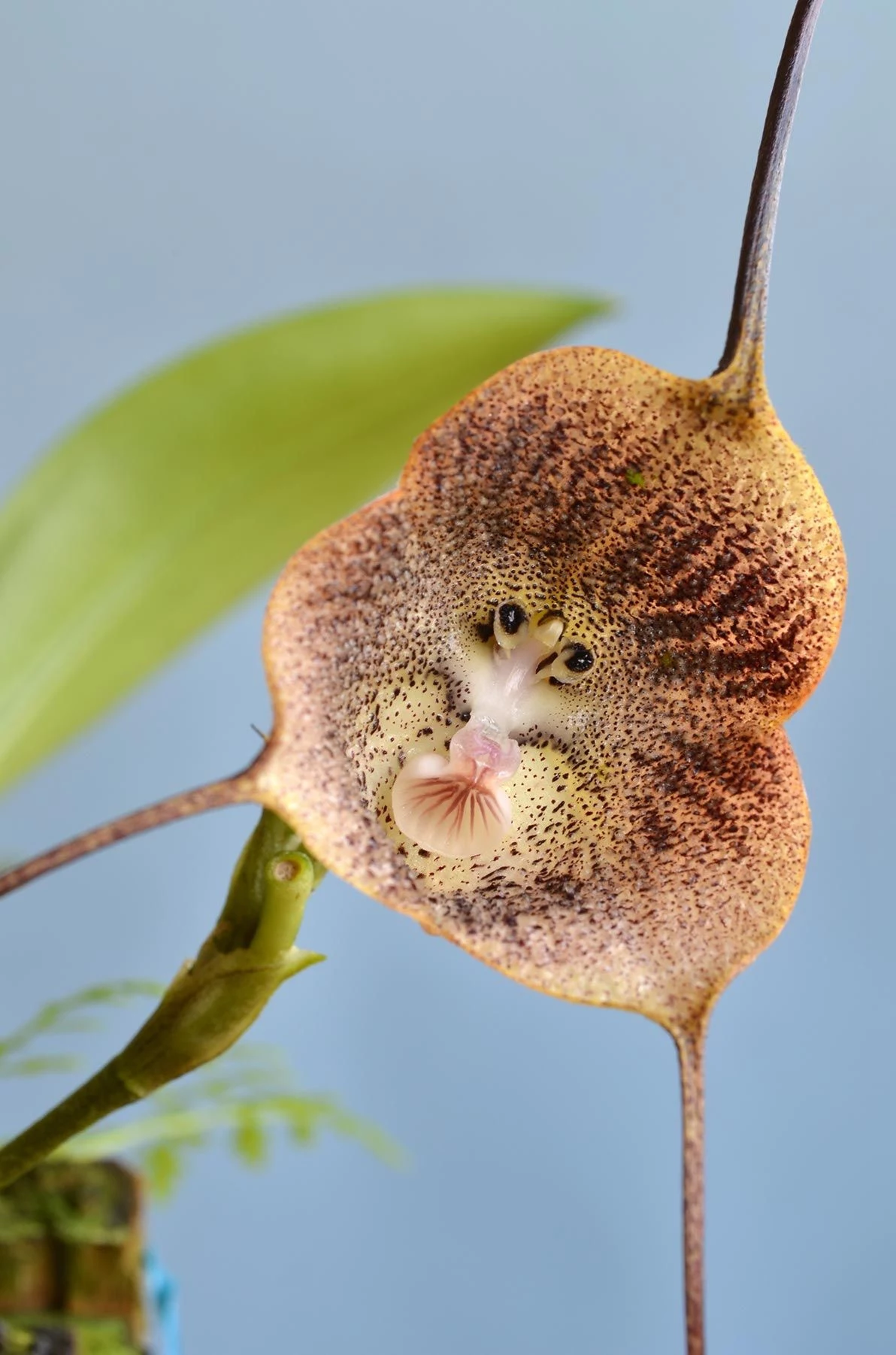
First, Understand What You’re Dealing With
Before you even dream of buying one, you have to get your head around where it comes from. The official name, Dracula simia, gives you a few clues. Dracula means “little dragon,” which points to the long, spindly tails that hang off the flowers. And simia? That’s Latin for monkey, obviously referencing the wild arrangement of petals that creates that little face. It’s an incredible bit of work by mother nature.
These orchids are native to a very specific slice of the world: the cloud forests high up on the mountainsides of Ecuador and Colombia. They live at altitudes between 3,300 and 6,600 feet, where life is defined by three things: cool air, insane humidity, and dim, filtered light. They are epiphytes, which is a fancy way of saying they grow on other plants, clinging to mossy tree branches with their roots totally exposed to the air. They don’t live in soil. Ever. Your job is to mimic a misty, cool mountainside. No pressure, right?
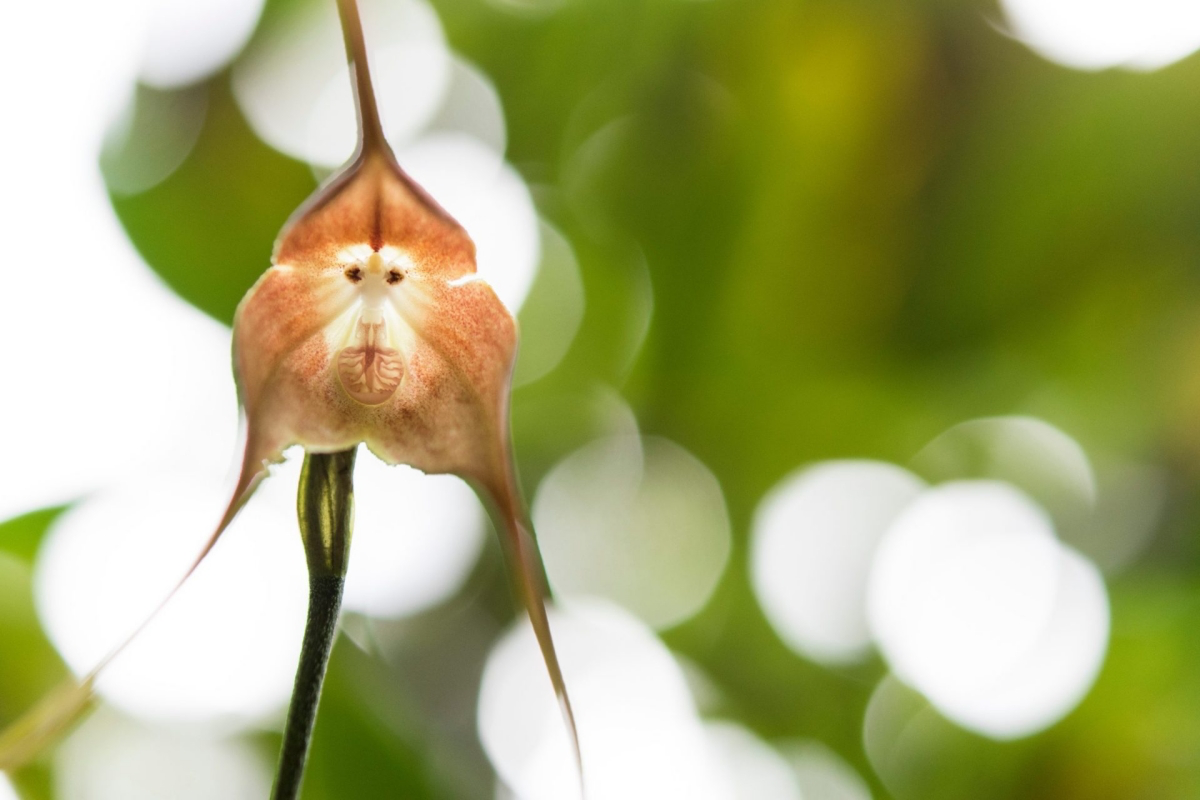
Heads Up: The Great Seed Scam
Let’s get this out of the way immediately. You will see “Monkey Orchid seeds” for sale online, usually for a few bucks. It is ALWAYS a scam. Orchid seeds are microscopic, like dust. In the wild, they need a special fungus to even sprout. In a lab, it’s a sterile, complicated process on a nutrient gel. You cannot plant them in a pot like a tomato seed.
Those “seeds” you’re buying are usually mustard or grass seeds. I’ve heard from so many people who wasted their money and got their hopes crushed. So, a critical rule: buy a live, established plant from a reputable orchid nursery that specializes in cool-growing species. Be prepared for the investment. A blooming-size Monkey Orchid plant from a real grower can cost anywhere from $40 to over $100, depending on its size and maturity. Don’t throw your money away on fake seeds.
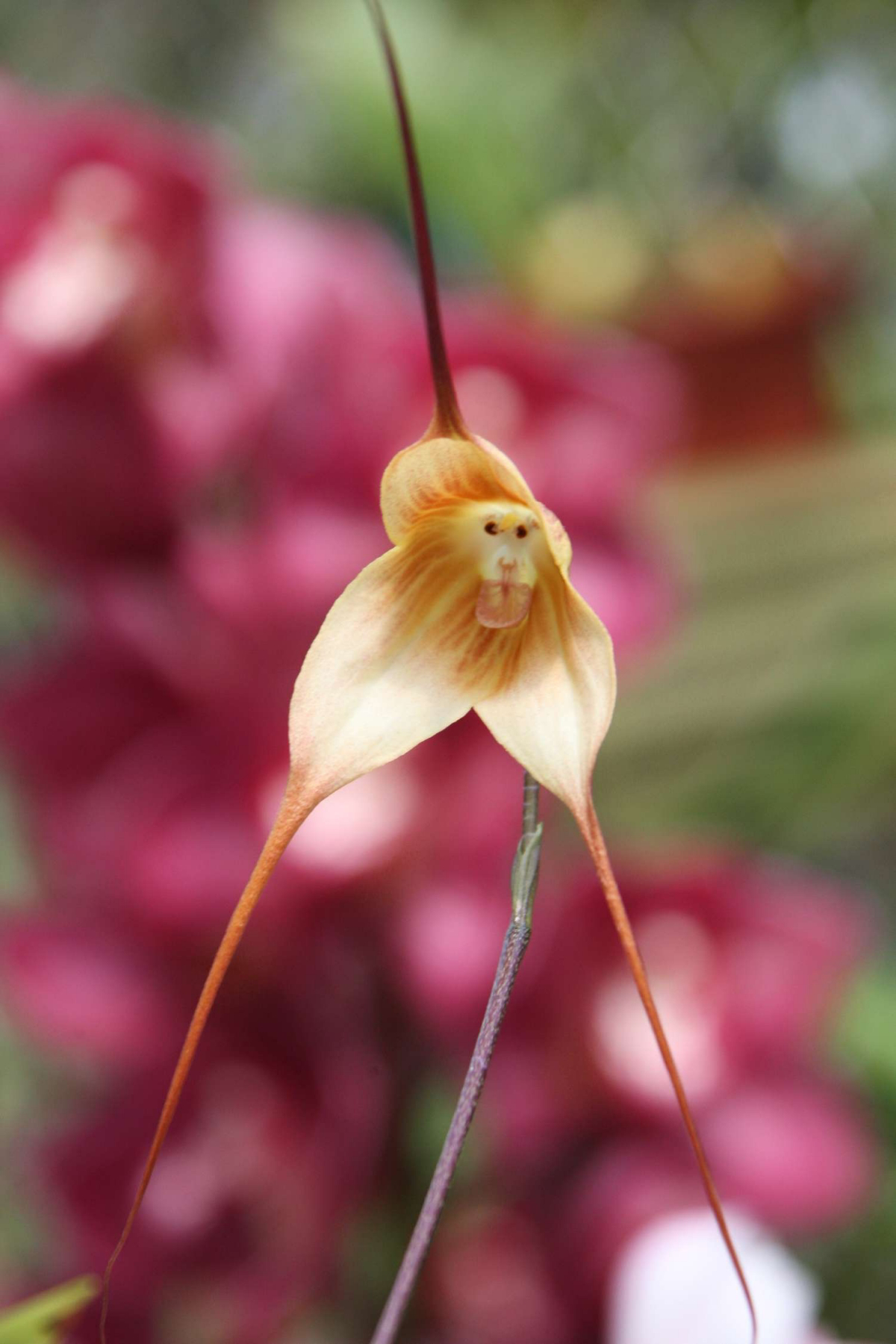
Your Setup: Recreating the Cloud Forest at Home
Your success is going to come down to one thing: controlling the environment. A normal house just won’t cut it. For years, I’ve relied on enclosed setups, and I strongly recommend you do the same. This is where the initial investment comes in.
A basic 2×2 foot fabric grow tent is a fantastic starting point and can be found online for about $50-$80. If you want something that looks nicer in a living space, a glass terrarium or orchidarium is beautiful but will run you $150 or more.
Temperature: The Cool-Down is a Rule, Not a Suggestion
This is the big one. Monkey Orchids are cool growers. They absolutely need a significant temperature drop between day and night to be happy.
- Daytime Temps: Keep it between 68-75°F (20-24°C). A little warmer for a short period is okay, but they stress out fast.
- Nighttime Temps: The temperature MUST drop to 50-60°F (10-15°C).
That nightly 15-degree drop is not optional. It’s what triggers their metabolism and tells them to bloom. I learned this the hard way. My first Dracula was in a room that was too warm. Before the heatwave: healthy green leaves. After one week of 80°F days: yellowing, limp leaves. The plant was gone in a month. It taught me that temperature isn’t a suggestion; it’s a law for these guys. A cool basement is often a perfect location. A simple digital thermometer with a max/min function is a must-have tool to track your daily range.
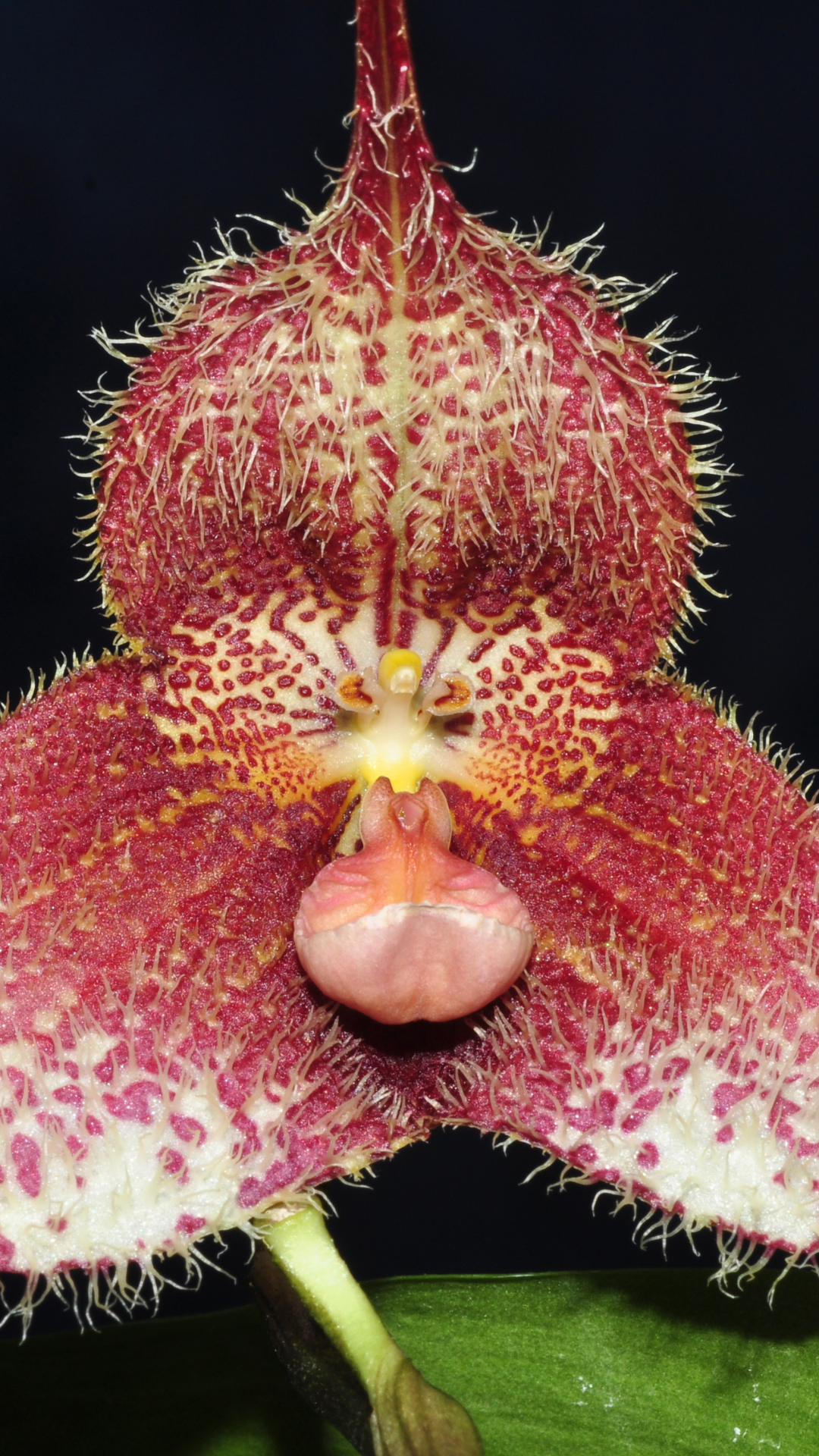
Humidity: Think Foggy Morning
These plants need constant, high humidity—we’re talking 70% to 90%. Your home is probably closer to 40%. Just misting with a spray bottle won’t do it. The best way to provide this is inside your enclosed tent or terrarium.
Oh yeah, and here’s a pro tip that will save you so much hassle: get an ultrasonic humidifier (about $25) and plug it into a humidistat controller (an Inkbird-style one costs around $40). You set the humidistat to 80%, and it will automatically turn the humidifier on and off to keep the air perfectly moist. For a $65 investment, you get total automation and peace of mind. It’s a game-changer.
Air Movement: A Gentle, Constant Breeze
Stagnant, wet air is a death sentence; it’s a breeding ground for rot. In their mountain home, a breeze is always present. You need to replicate this with a small fan. I use little 4-inch computer fans hooked up to a cheap variable-speed controller. You want a gentle, constant waft of air, not a hurricane. It keeps the leaves healthy and wards off fungal problems.
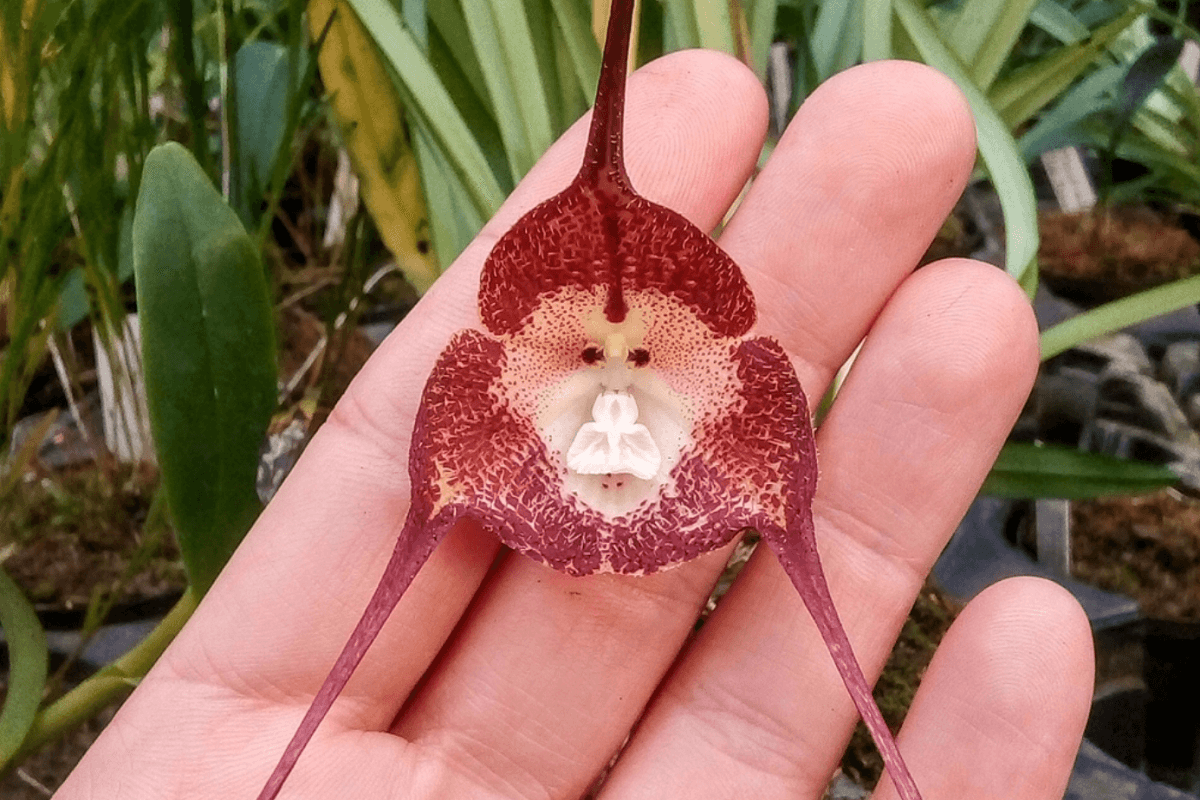
Light: Bright Shade is the Goal
Think forest floor light. Dim, filtered, and cool. Direct sun will scorch their delicate leaves, leaving black, crispy patches within hours. A spot near an east-facing window can work if the light is very weak, but a north-facing window is generally safer. Honestly, artificial light is way more reliable.
Full-spectrum LED grow light bars are perfect because they are powerful but run cool. A 15-30W bar is plenty. Position it about 12-18 inches above the leaves and run it on a timer for 12 hours a day. Consistency is key.
My Go-To Setup for Beginners
Feeling overwhelmed? Don’t be. Here’s a quick rundown of a solid starter kit that will set you up for success:
- The Enclosure: A 2’x2′ grow tent ($50-$80)
- The Light: A small, full-spectrum LED bar ($20-$40)
- The Air: A 4-inch computer fan and a speed controller ($20)
- The Humidity: A small ultrasonic humidifier ($25) and a humidistat controller ($40)
- The Potting Stuff: A bag of high-quality New Zealand sphagnum moss and some plastic net pots.
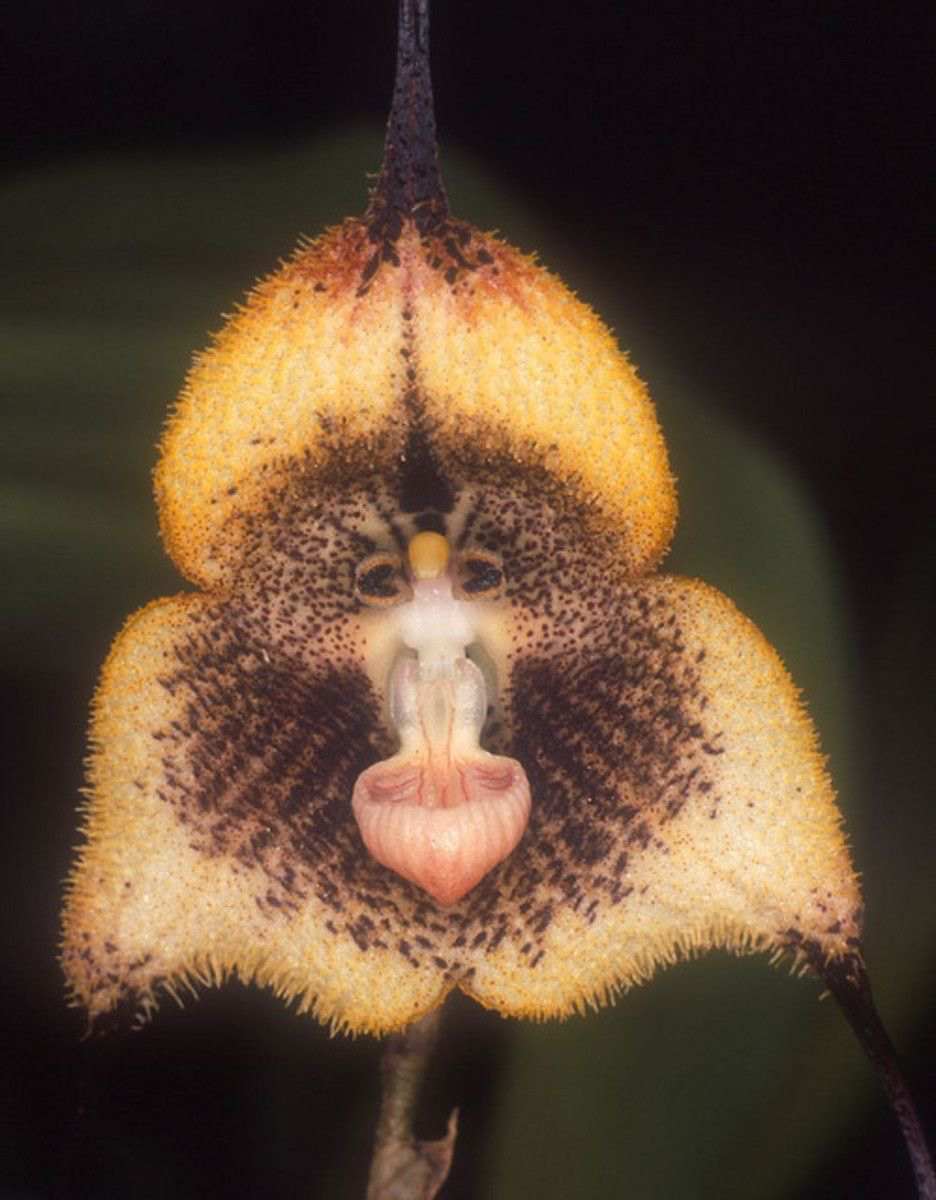
Potting, Watering, and Feeding
Remember, roots need air just as much as water.
Potting Medium and a Word of Warning
The best and simplest medium I’ve found is pure New Zealand sphagnum moss. It holds tons of moisture while staying airy. Pack it gently into a plastic net pot or a hanging basket. And here’s why that’s important…
Monkey Orchid flower spikes often grow straight DOWN. They’ll push right through the moss and pop out the bottom. Trust me on the net pots. I once had a perfect flower spike grow down into the bottom of a solid plastic pot and just… die there, trapped. It was heartbreaking. Using a basket or net pot lets them hang free and bloom properly.
Watering: Purity is Everything
The moss should always feel like a wrung-out sponge—moist, but not soggy. Letting it dry out completely can kill the fine roots. But what you water with is just as important. These plants are extremely sensitive to chemicals and minerals.
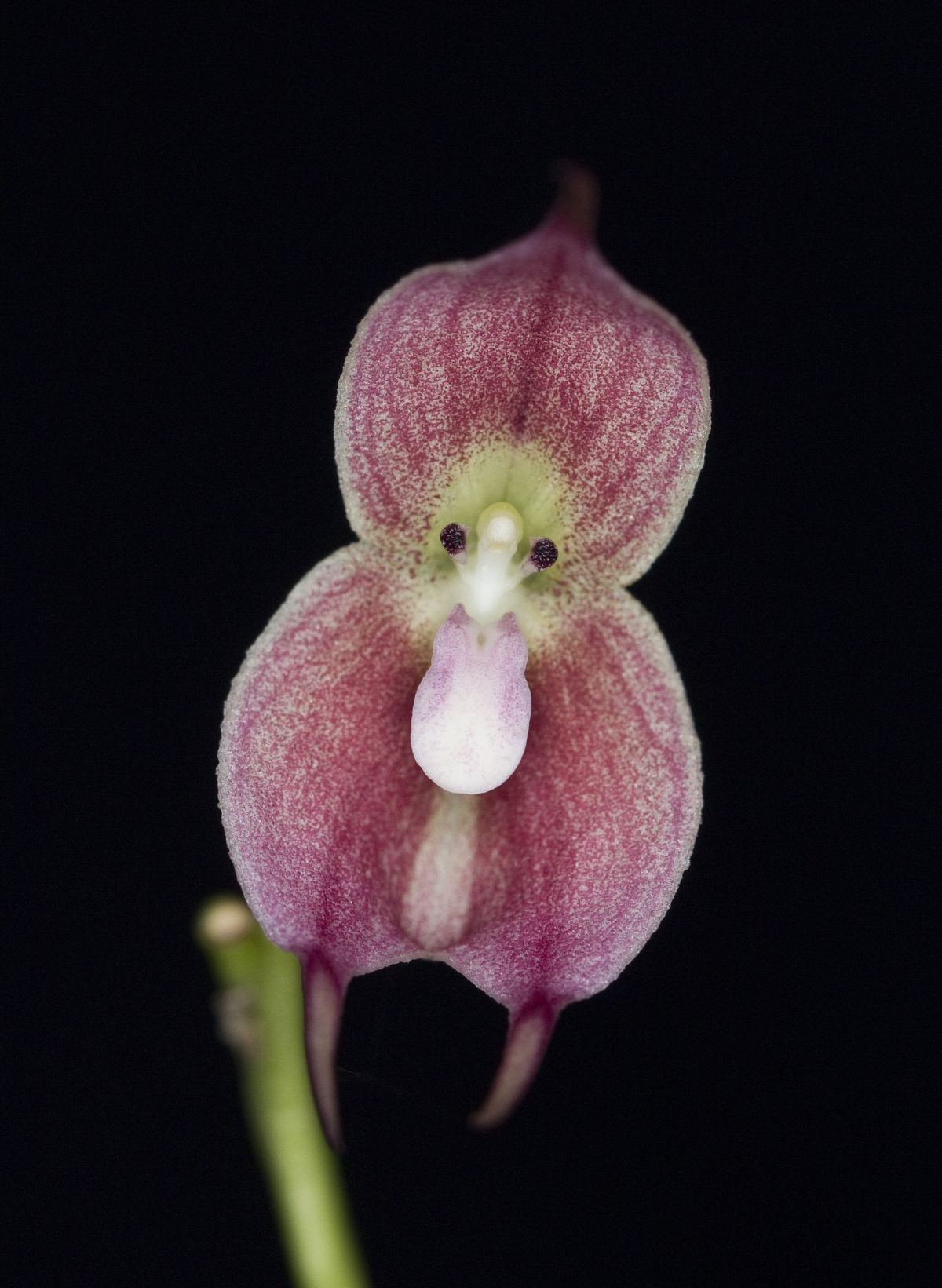
You absolutely must use pure water. Rainwater is the best. Distilled water or water from a reverse osmosis (RO) system are the next best things. Tap water, especially if it’s hard, will slowly poison the roots with mineral buildup. Letting it sit out helps chlorine evaporate, but it doesn’t remove the minerals. This is another non-negotiable point.
Fertilizing: Less is More
These are not heavy feeders. Go by the “weekly, weakly” rule. Use a balanced, urea-free orchid fertilizer diluted to 1/4 of the recommended strength. I feed with every watering during the spring and summer, then flush with pure water once a month to prevent salt buildup. In the fall and winter, I cut back to fertilizing every two or three weeks.
Final Thoughts: Is This Plant Really for You?
Okay, deep breath. Before you click ‘buy,’ let’s have a quick reality check. Can you honestly answer YES to these three questions?
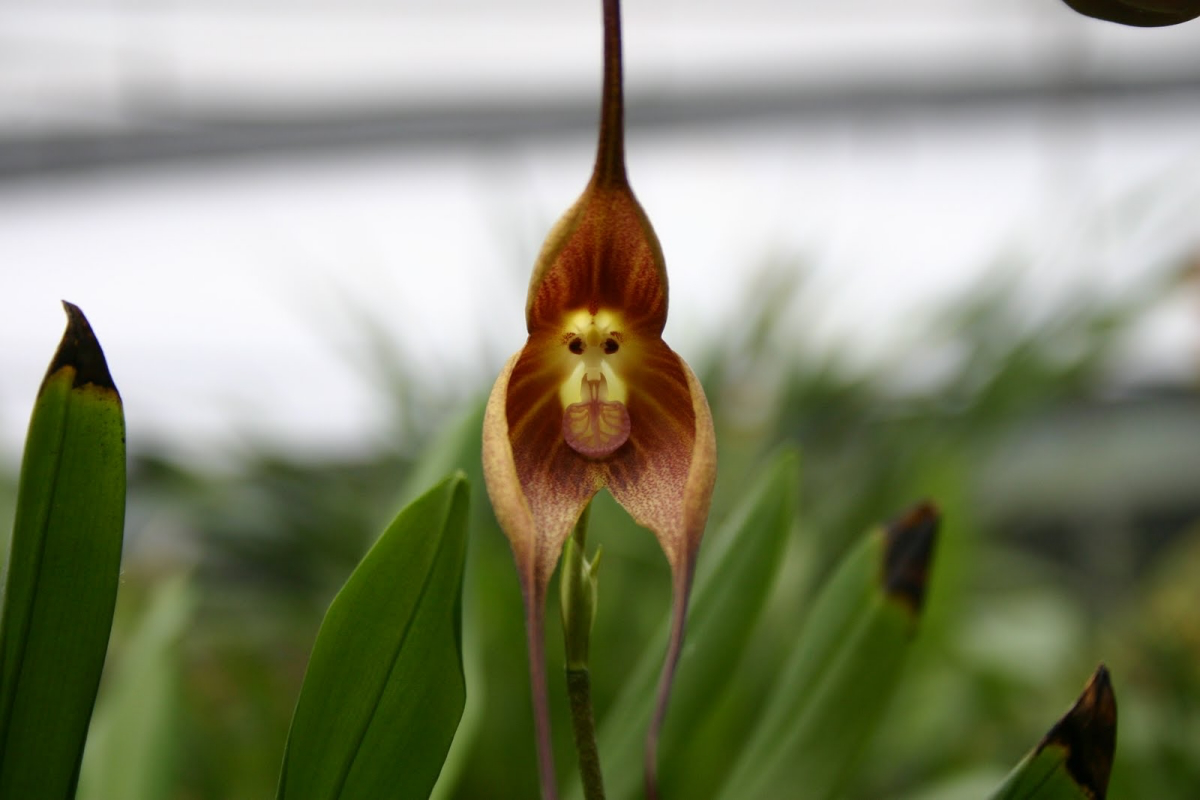
1. Do I have a spot that consistently stays below 75°F during the day?
2. Can I provide a reliable 15°F (or more) temperature drop every single night?
3. Am I willing and able to use only pure water (rain, distilled, or RO) for this plant?
If the answer to any of these is no, this might not be the plant for you right now, and that is perfectly okay! This is an expert-level plant for someone who enjoys the challenge and is willing to invest the time and money to create a very specific environment.
If you are that person, the reward is incredible. Watching that flower spike develop and finally open to reveal that goofy little face is one of the coolest experiences in the plant world. It’s a living piece of a far-off, magical place. Be patient, be observant, and enjoy the journey.
Galerie d’inspiration

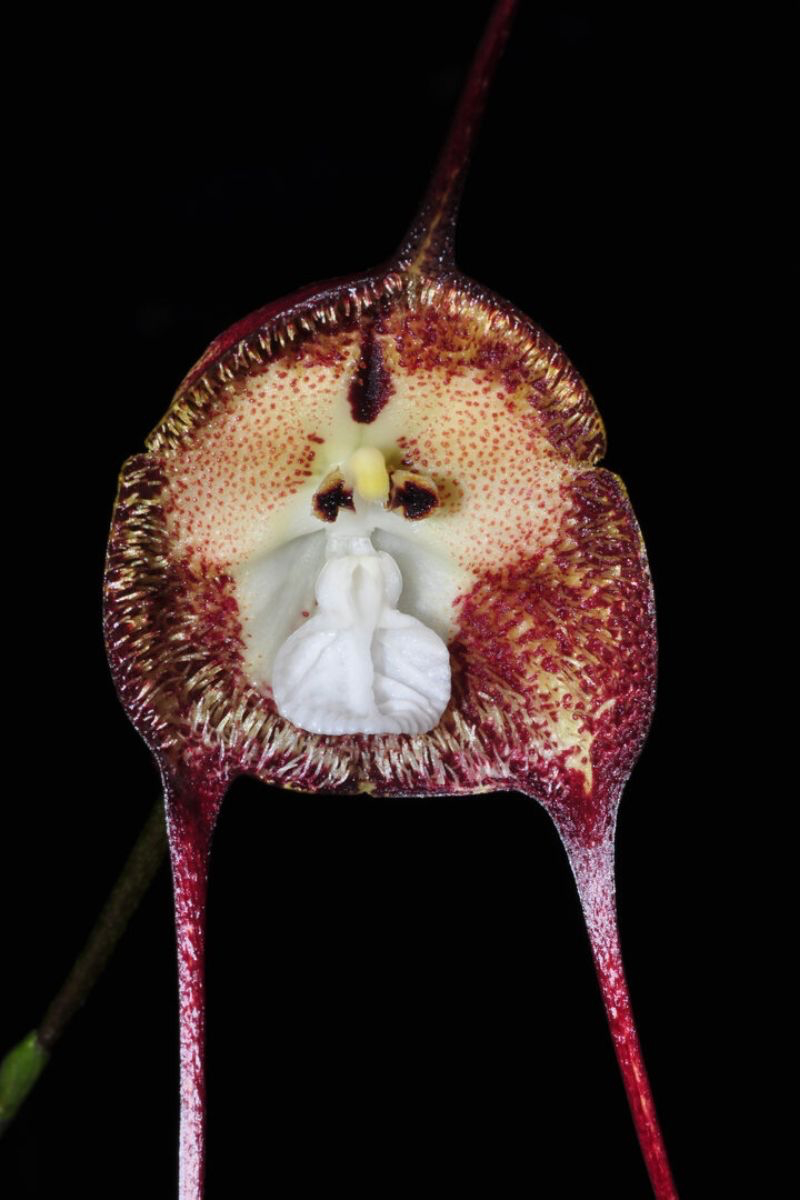
The right home isn’t a pot, it’s a basket. Since their roots demand exceptional airflow to mimic clinging to a mossy tree, traditional plastic pots are a death sentence. A slatted wooden Vanda basket or a net pot is the professional’s choice. This allows air to circulate freely around the roots, even when they’re packed in damp sphagnum moss, preventing the root rot that claims most beginner-grown Dracula orchids.
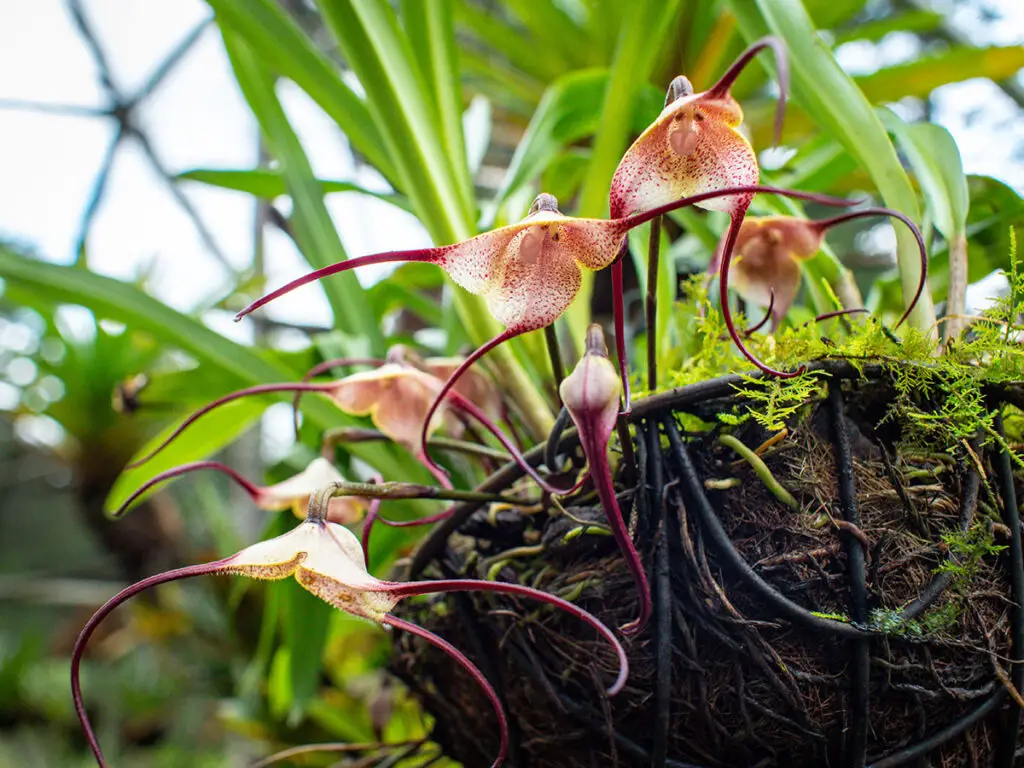
Over 95% of orchid species are epiphytes, meaning they derive moisture and nutrients from the air and rain and would be killed by conventional soil.
For your Monkey Orchid, this means tap water is a gamble. The dissolved minerals and chlorine found in most municipal water can build up and burn its delicate, exposed roots over time. Stick religiously to rainwater, distilled water, or water purified by reverse osmosis to keep it happy.
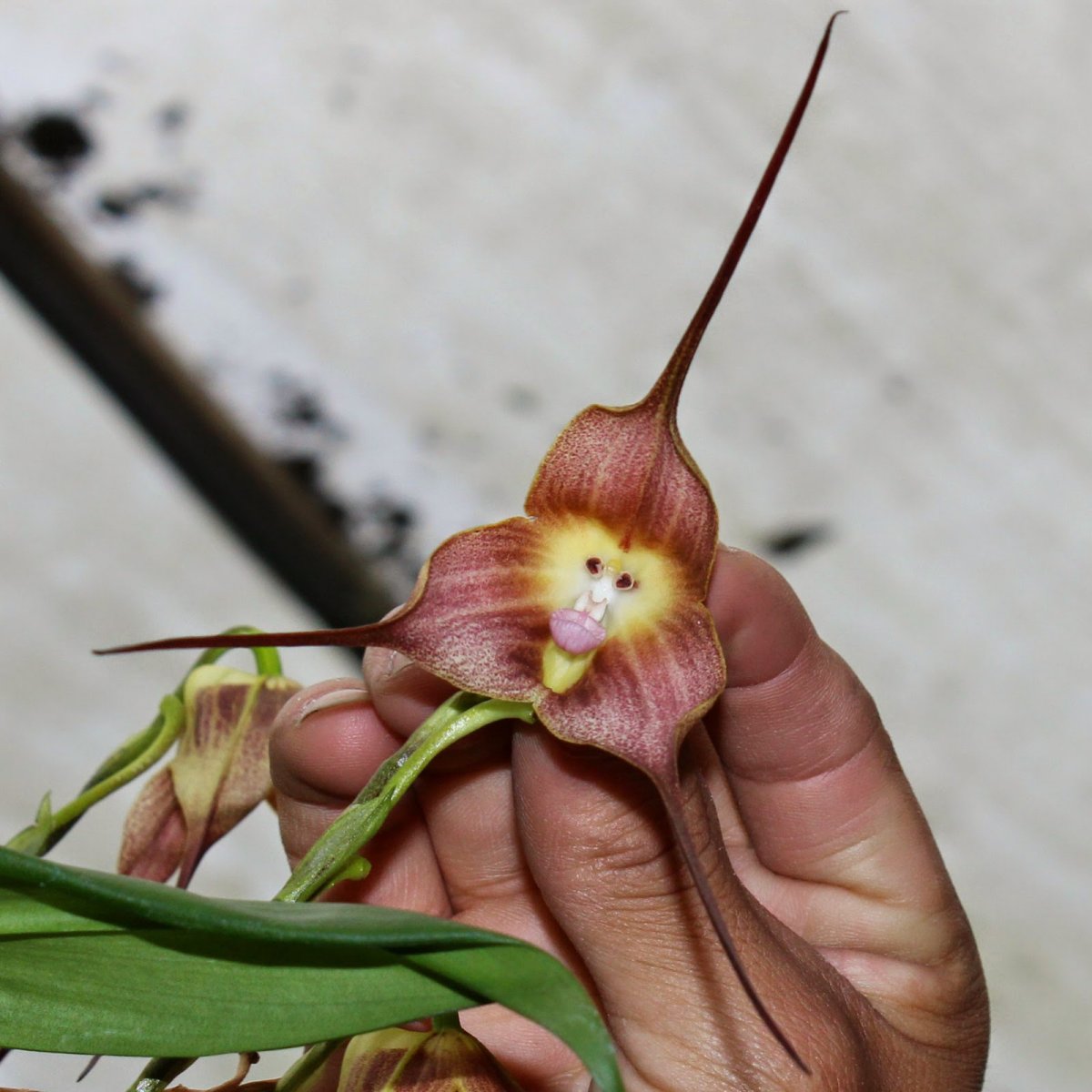
Feeling intimidated by the Dracula’s demands?
You can still get an orchid with personality. The world of orchids is filled with spectacular blooms that are far more forgiving. For a similarly whimsical feel without the high-altitude needs, consider these:
- Psychopsis papilio (Butterfly Orchid): Its flowers look uncannily like butterflies and it thrives in standard household conditions.
- Oncidium ‘Sharry Baby’: Famous for its spray of small blooms that smell intensely of chocolate, and it’s one of the easiest fragrant orchids to grow.
- Phalaenopsis (Moth Orchid): The classic beginner’s orchid, now available in stunning patterns and colors that offer their own unique character.
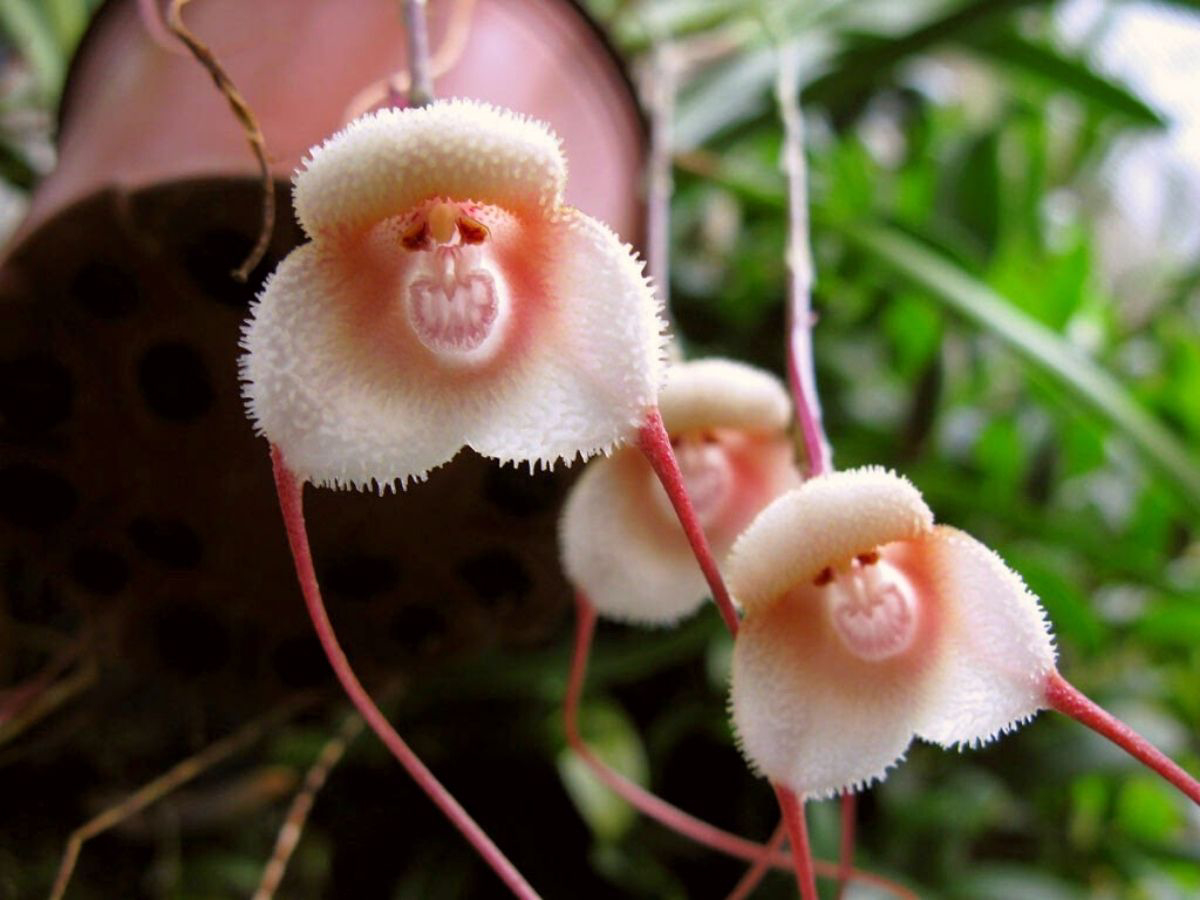
Sphagnum Moss: Offers incredible moisture retention, which is great for humidity. However, it can become compacted over time, suffocating the roots if not managed carefully.
Fine-Grade Orchid Bark: Provides superior aeration, preventing root rot. The downside is that it dries out much faster, requiring more frequent watering or misting.
Many expert growers use a custom mix, combining high-quality sphagnum with a small amount of fine Orchiata bark to get the best of both worlds.
- Prevents fungal and bacterial rot on leaves.
- Strengthens the plant’s cell structure.
- Mimics the natural breezes of its mountain home.
The secret? Constant, gentle air movement. A small, inexpensive USB desk fan set on low and pointed near (but not directly at) the orchid is one of the most effective tools for ensuring its survival, especially in a high-humidity environment like a grow tent or terrarium.










